Black Friday Cyber Monday (BFCM) is the biggest shopping event of the year and marks the start of the Christmas holiday season when the most revenue is generated. This year is no different. How should eCommerce businesses prepare for it? Is there anything particular to keep in mind this year? How to succeed? And more importantly, how not to mess up?
scandiweb organized a panel discussion where we asked our marketing, CRO, SEO, and analytics specialists a series of questions eCommerce store owners might have before BFCM 2022 to help merchants fully prepare for the sales weekend. Most of the tips are universal and apply to Black Fridays to come!
Q&A participants:
- Glebs Vrevskis, scandiweb’s co-CEO / eCommerce Growth Lead
- Olga Kimalana, Head of CRO & UX
- Lina Ivanova, Head of Traffic Acquisition
- Reinis Groskops, Head of Growth team
| Sign up for 24/7 monitoring for the Black Friday 2022 weekend by filling out our contact form! Limited slots available. |
Here are the key takeaways from our Q&A session with the experts! The discussion was moderated by Maris Skujins, scandiweb’s Business Development Executive.
1. This year’s Black Friday promises to be…
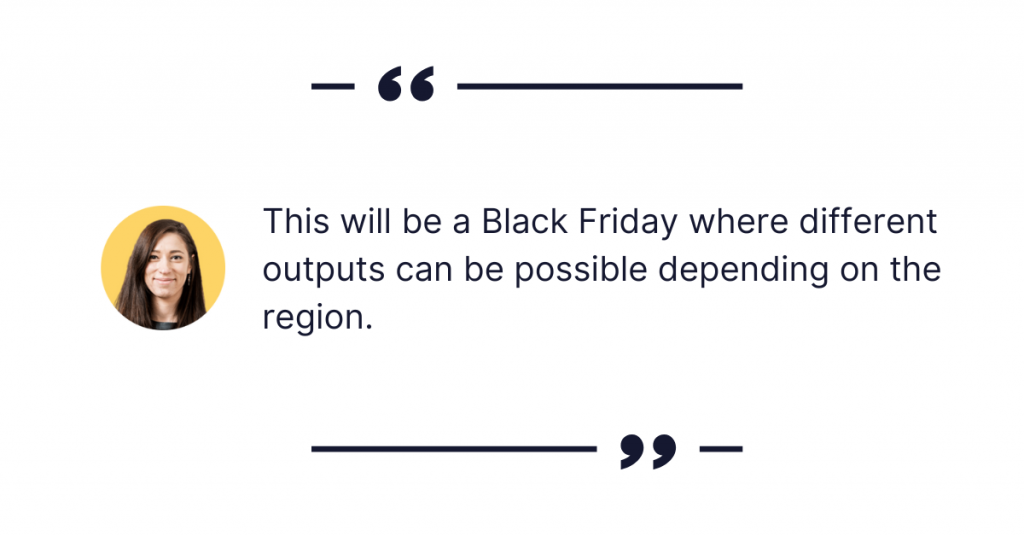
Lina: “This will be a Black Friday where different outputs can be possible depending on the region. For example, in Europe, we see that prices are going up and we expect that people might buy less. At the same time, quite a few people might actually look for Black Friday to use the opportunity to buy things cheaper and in advance because you don’t know what will happen next year. Indeed, we’re living in quite unpredictable times.”
2. Promotion strategies, considering the year’s changes
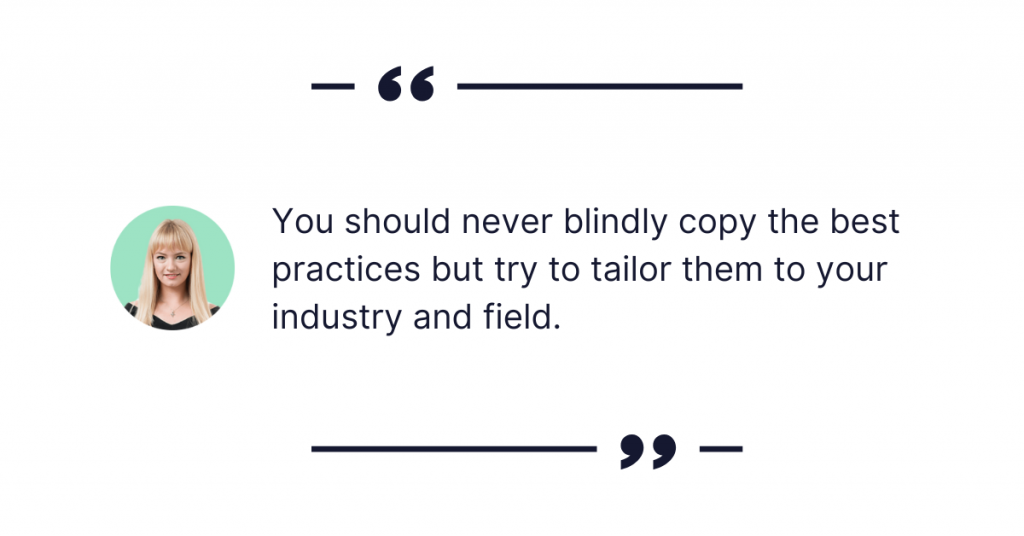
Olga: “There are different ways how merchants can start preparing. First, they need to be aware of the specifics of their particular industry. The way how you will prepare in apparel retail differs from the way it’s for electronics merchants, or if you have a subscription-based company selling food boxes. You should never blindly copy the best practices but try to tailor them to your industry and field.
Prepare in advance and make sure everything is set up technically, and the site can handle the customer volume. You can also inform users that Black Friday is coming up—there are merchants using interesting strategies, like making Surprise Black Fridays a week earlier, sending out emails, or on the contrary, starting to collect emails to send exclusive access deals a few hours or days earlier and offering a larger stock, bigger sales, extra points in the loyalty program, etc. Some companies even suggest adding them to the calendar to receive updates and reminders that Black Friday is starting on their sites.”
3. How to prepare the site from a technical perspective?
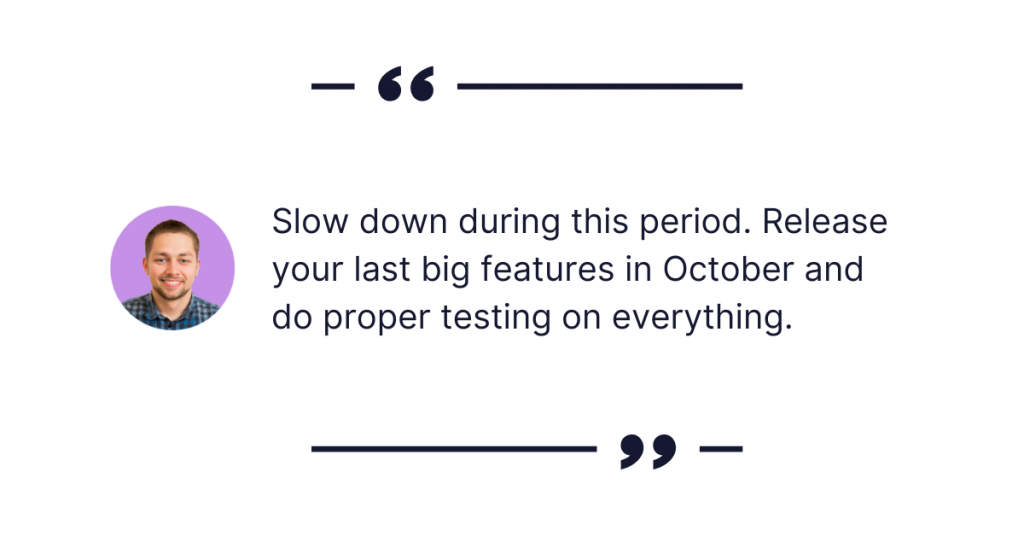
Glebs: “Usually Black Friday is the most common deadline that we hear from merchants when they start building the website—I want my new website to be ready before Black Friday. Merchants need to work hard throughout the year to ensure the website is in the best shape. A common thing we see is code freeze starting from the first days of November, with no new features being released. That’s one of the practices we suggest for everyone. Slow down during this period: release your last big features in October, and do proper testing on everything, especially payment methods, e.g., Buy now, pay later is expected to be a very popular payment method in this cost-saving environment we’re in. When the code freeze is in place, your development team can continue working in the background and plan to release new features later in December or January.
From an infrastructure standpoint, we need to be confident that the website will behave well when there are many more customers coming and more transactions happening. Penetration testing needs to be done timely. If it’s the first big sale for your store, you can’t just assume it will behave well. A lot of merchants are running smaller sales for a limited number of customers before, trying to replicate the Black Friday peak and test out the website infrastructure.”
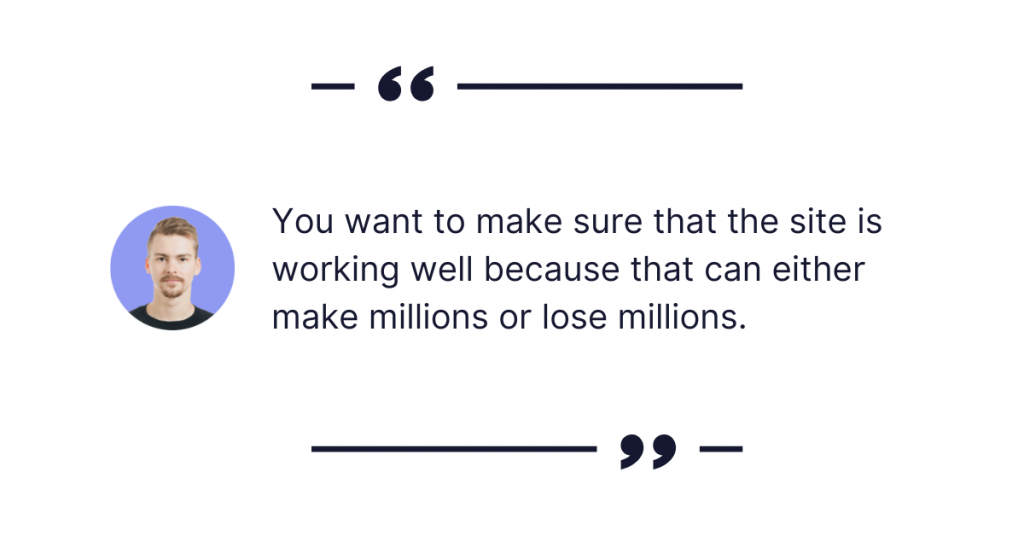
Reinis: “Even if you do code freeze early on (the latest time to do any major deployments is probably 2 weeks before Black Friday), you need to look into having your development team still available 24/7 during the sales. Once you start investing big marketing budgets to reach the audience, you want to make sure that the site is working well because that can either make millions or lose millions. You’d also want monitoring systems in place that can trigger any alerts if something goes wrong.”
4. When to start preparing for the next Black Friday?
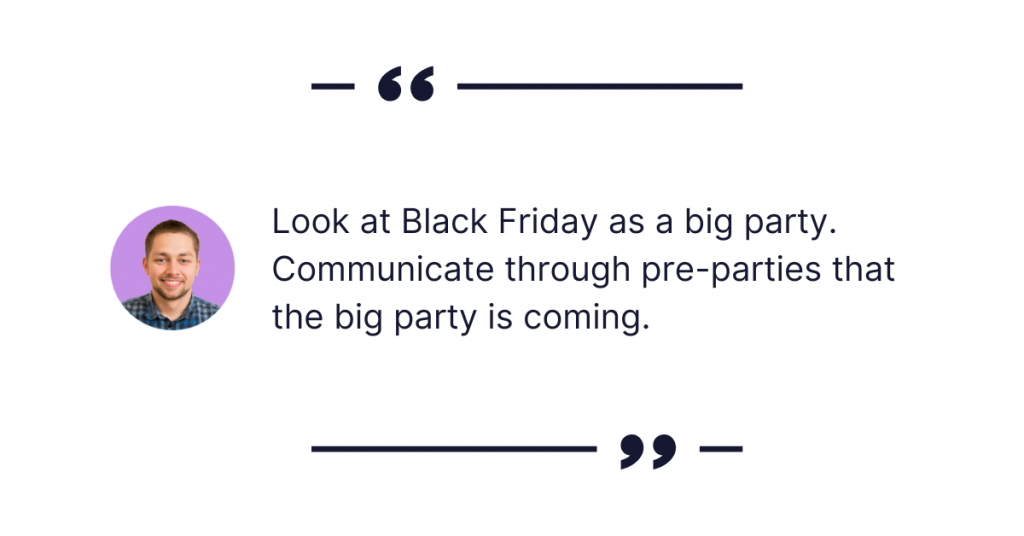
Glebs: “From the preparation perspective, it’s worth splitting it into sections and dividing technical from marketing preparations. While on the technical side, you need to work very hard throughout the year, usually on the marketing activities you don’t think about as much and have many other campaigns going on. What we see from the statistics, is that shoppers start looking for Black Friday deals about 30 days in advance. You need to be ready technically before that for sure but you also need to be ready from the marketing perspective at least 2 months prior.
One of my favorite tactics for audience warming up is starting to collect customer emails and gathering first-party data. In practice, that means not just running random sales but looking at Black Friday as a big party. What do you usually do before big parties? You do pre-parties, and you want to communicate well through those pre-parties that the big party is coming.”
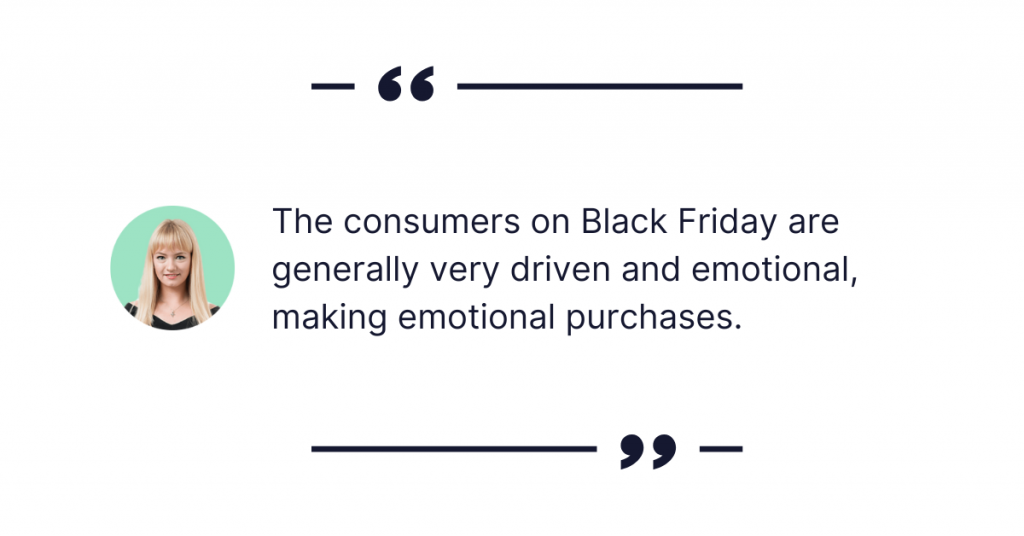
Olga: “When we analyze user behavior post-Black Friday, we see quite often that a lot of people come to the stores a few days in advance, select the products that they want, add them to the cart, and when the sale hits, they go to the cart and click on the buy button. The consumers on Black Friday are generally very driven and emotional, making emotional purchases. They want to get them done quickly and get easily influenced by scarcity tactics. That’s why it’s important to allow people to build those pre-saved product lists, and have different wishlists on the site depending on the intended purchase. You can also send them emails before Black Friday reminding them that they had products saved for later.
Another thing before the sale hits is when you see that users are actively adding products to the cart but not yet buying, prompting them to create an account and save items for a longer time. You can’t be fully dependent on the cookies to have these items in the cart when users come back. Show different notifications, e.g., Not ready to buy yet? Save your cart.”
5. How to create the perfect customer experience?
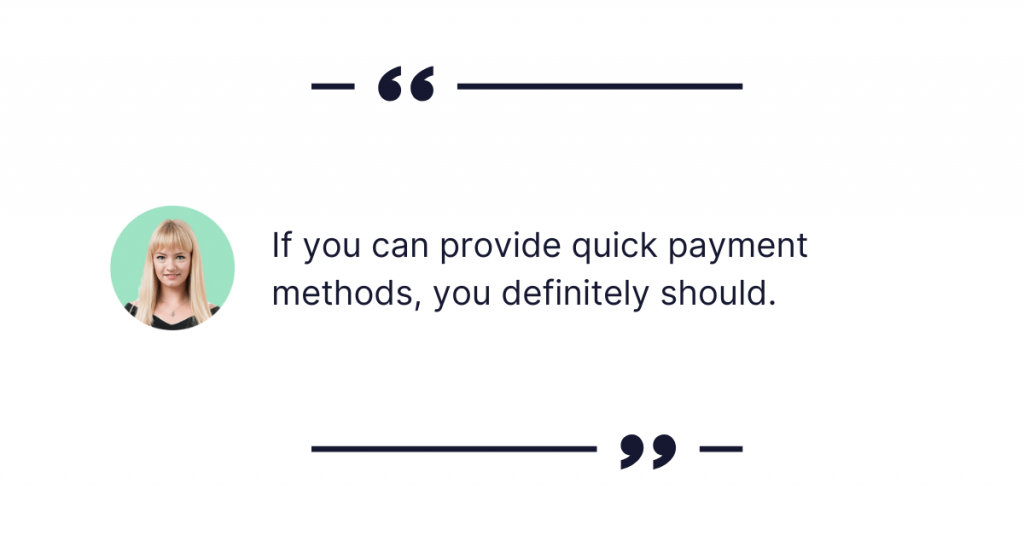
Olga: “During Black Friday, express checkout and guest checkout becomes essential. If you can provide those quick payment methods, you definitely should. Don’t force people to register to make a purchase, because this is when you can lose a potential customer. Regarding coupon codes, quite a lot of research points out that people become annoyed with having to enter coupon codes and look for them in the email or header. That creates another step in the checkout, but users want to get the items as fast as they can while they’re in stock.
Subconsciously, when we think of Black Friday, we imagine people storming into the stores and having a million people on the website trying to buy something, especially if you implement different plugins that show, e.g., 5 people are viewing this item. Low in stock. Reducing the number of steps required to make a purchase and not having people enter something manually is only going to make it easier for customers to buy and for you to earn money.”
6. Fear Of Missing Out (FOMO): good and bad practices
Glebs: “One thing I saw as successful for some merchants was getting customers into VIP lists for the acquisition channels, e.g., through Facebook campaigns, PPC campaigns, and then opening the Black Friday deals for this limited number of people. They would have access to the store 1h or 24h before everyone else and have the feeling of being the first ones in the virtual queue not to miss out.”
Reinis: “The usage of FOMO will also depend on the brand. You might want to keep FOMO tactics down. People understand regardless that deals are running out, that’s why it’s Black Friday. Focus on your top customers and provide special treatment for them, as generally, 20% of your top customers drive 80% of your revenue. Black Friday deals themselves need to focus on your existing customer base and marketing list. It is the time when the competition for ad space is the biggest and costs to do advertising for cold audiences during Black Friday are out of this world.”
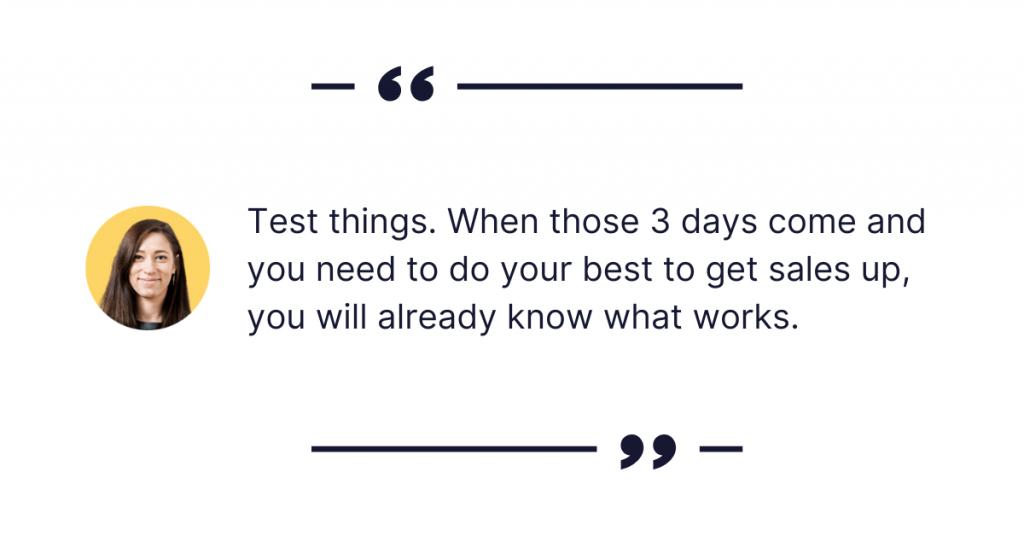
Lina: “A lot of it depends on your budget and your product. Based on that, there might be different strategies. One important thing to remember for all is testing which in digital marketing and advertising is quite accessible. Try to test pre-sale at least 1 week in advance, if you haven’t done it yet. See if you can target and cash people who are looking to make a purchase early on before the stock runs out. At the same time, test things. And when those 3 sales days come and you need to do your best to get sales up, you will already know what works.
That’s something you can start in November so that you can have the whole month. If we’re looking at Google trends and how people start searching for gifts for boyfriend, gifts for mom and dad, etc., it’s exactly the beginning of November. With testing beforehand, you’ll be able to minimize your costs during Black Friday.”
Olga: “Speaking of gifts in terms of user experience and product positioning, it’s worth having gift guides and gift packaging. Think about promoting gifts if the product that you’re selling can be gifted.”
7. Customer service speed and deliveries. Are people still as demanding?
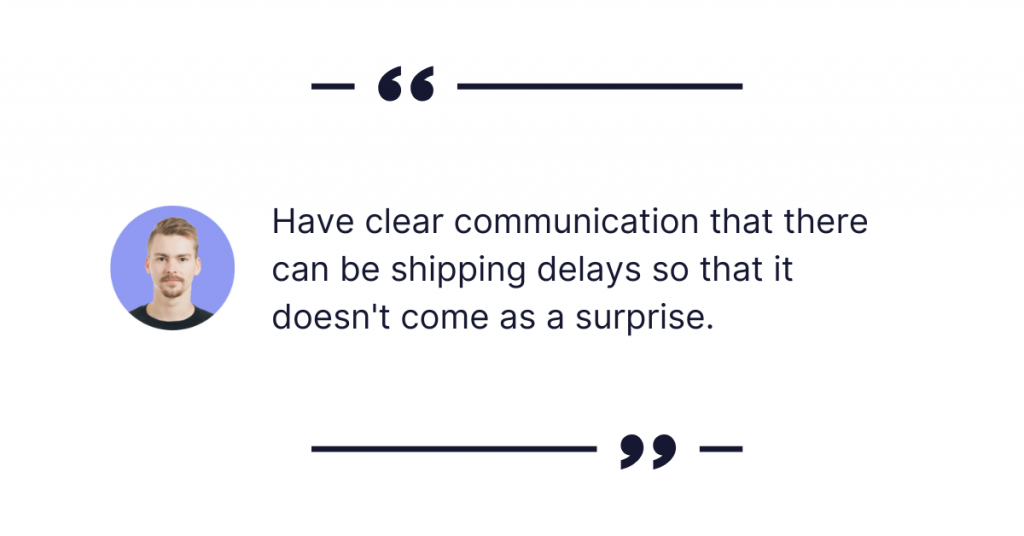
Reinis: “Most likely the customer expectations don’t change that much. But if you have some limitations in stock or inventory, there is a risk that some things could take longer. Keep in mind a lot of things need to be shipped after this period because there are a lot of sales happening. Delays are quite frequent. To ensure that customer experience is not negatively affected, have clear communication that there can be shipping delays so that it doesn’t come as a surprise. It might be a good idea, depending on your business, to communicate in your Order Success email something along the lines of We’ll try our best but there might be some delays in getting the product to you.
This year is hopefully going to be better than previous COVID years where there were also major issues with getting things produced and getting your supply chain working correctly. That’s what we predict, as there’s not really any talk in general about different kinds of supply chain issues in the media or anywhere else.”
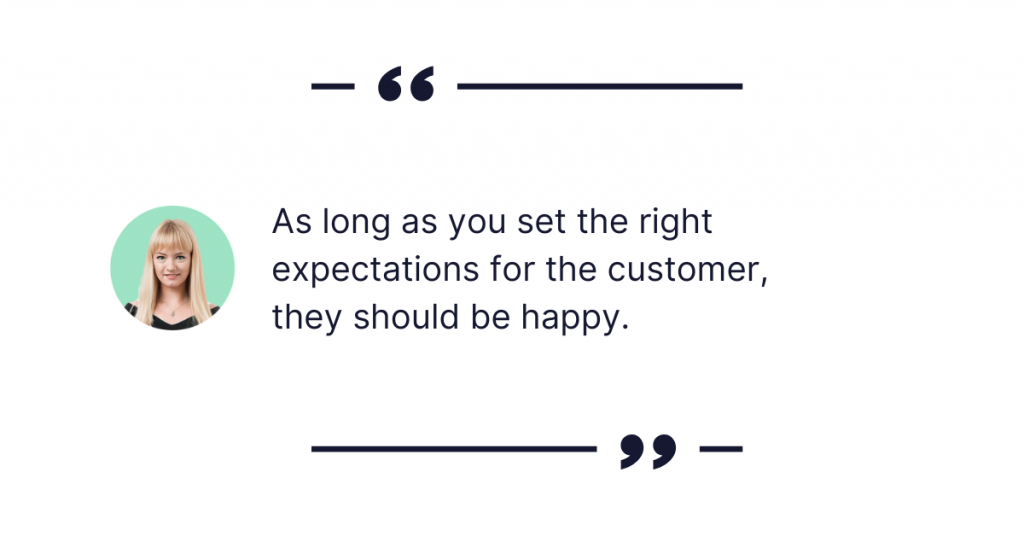
Olga: “As long as you set the right expectations for the customer, they should be happy. From a personal experience, I once bought an item in the holiday season as a gift, and the store didn’t communicate that there would be shipping delays for up to 2 weeks. I was asking customer support every other day about the status of my package and in the end, I did not want to return to that store. Also, I had a completely different experience as a customer myself, when I ordered a product, it was not shipped on time, and the store sent me a beautiful email apologizing for the issues in their factory and giving a coupon code for the next purchase. On the human level, I understood and was willing to wait. But when they promise and do not deliver, this is when they lose a returning customer. Be transparent about your capabilities. Better to underpromise and overdeliver than otherwise.”
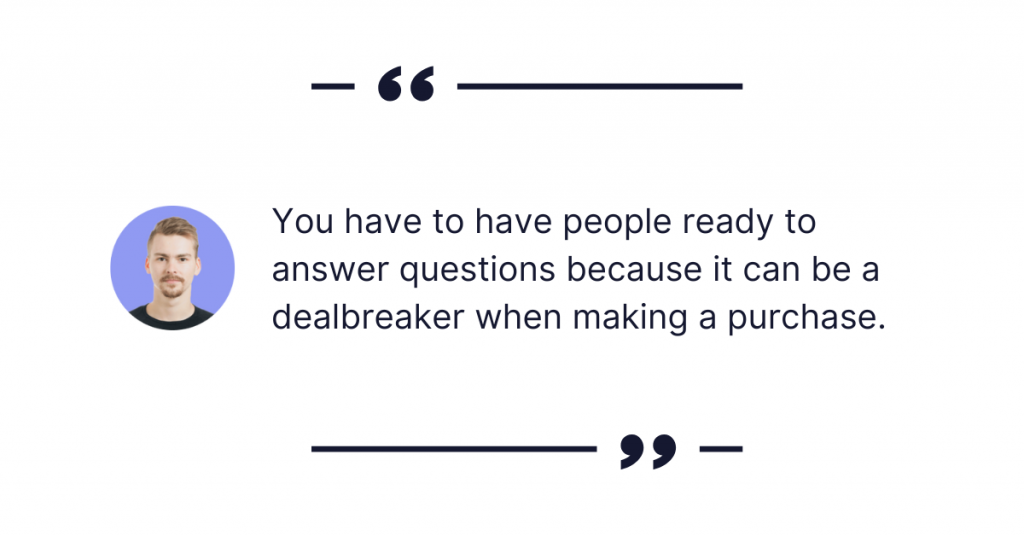
Reinis: “That reminds me, you don’t only need to have your development team ready but also your customer support. With more and more traffic on your site during the sales, there are going to be more and more questions coming in. Live chats are a great thing, but we shouldn’t think that asking for a customer’s email and then answering their question 2 days after Black Friday would be a good experience. You really need to be ready with your customer support and ensure that everyone’s aligned on the messaging and communicating expected delivery times. You have to have people ready to answer questions because it can be a dealbreaker for people when making a purchase. You don’t want people to, for example, leave checkout if they don’t fully understand the shipping costs or the expected delivery times, or have some questions about the products. Have your customer service ready, motivated, maybe with a full inventory of energy drinks to get through this period.”
Olga: “You can also analyze the requests you had last Black Friday and what people were actually asking and update your FAQ page more towards the sales period. Include information about deliveries, and terms of the sale, there can also be some changes and restrictions in the return policy, etc. There are different cases related to the sales, and if you know the set of questions people are asking each year, it might be worth updating some FAQ sections on your site.”
8. When should you have the biggest sales?
Reinis: “You really shouldn’t go into Black Friday sales with 15% off, especially if you’re doing that every weekend. Black Friday is expected to be the biggest sale of the year. A lot of your customers will be waiting for this period, and if they come to the site and see only a 15-20% discount, they might be a little disappointed. There’s also an option to not do sales at all, but you should communicate that.”
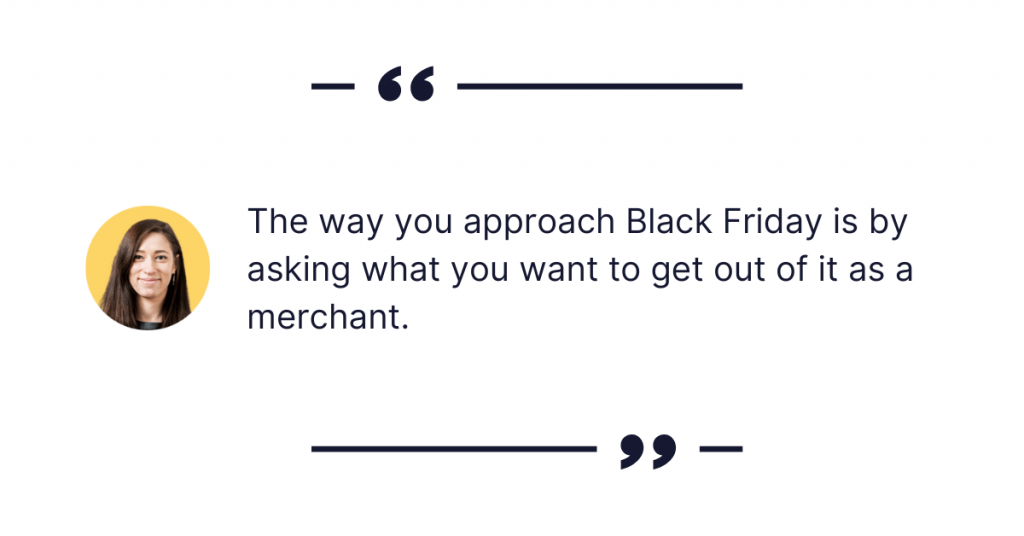
Lina: “Again, the best answer is—it depends from business to business. The way you approach Black Friday is by asking what you want to get out of it as a merchant. Do you want to get rid of stock items that are not selling well? There’s your chance. Perhaps you want to increase the average order value? That can be achieved by creating bundle deals or offers like pay for 2, get 3, etc. Maybe you have a profit margin that indeed, you can’t even offer discounts? Once you have the answer to these questions, you can see if you need Black Friday and how to differentiate it from other holiday sales that are happening throughout the year. Just keep in mind that this is an opportunity to capitalize on the fact that the people are ready to buy.”
9. Should you act on Black Friday or not?
Lina: “It starts within the organization. This branding layer of whether we run sales or not is something that only you as a company can define internally. Regarding promos, consult with PPC specialists and advertising agencies to understand whether it makes sense for you to run ads, how much it will cost, and how much you might get back, and evaluate your case individually.
For SEO, it’s a different story. It’s not so much about a certain campaign, but rather preparation throughout the year and making sure that your website is well optimized and runs smoothly from the SEO side, and people will be willing to find you on Google using Black Friday + your brand name. There are specific tips to make sure it happens, and an SEO specialist can advise on this, as well as how to target and attract people that haven’t thought about your brand.”
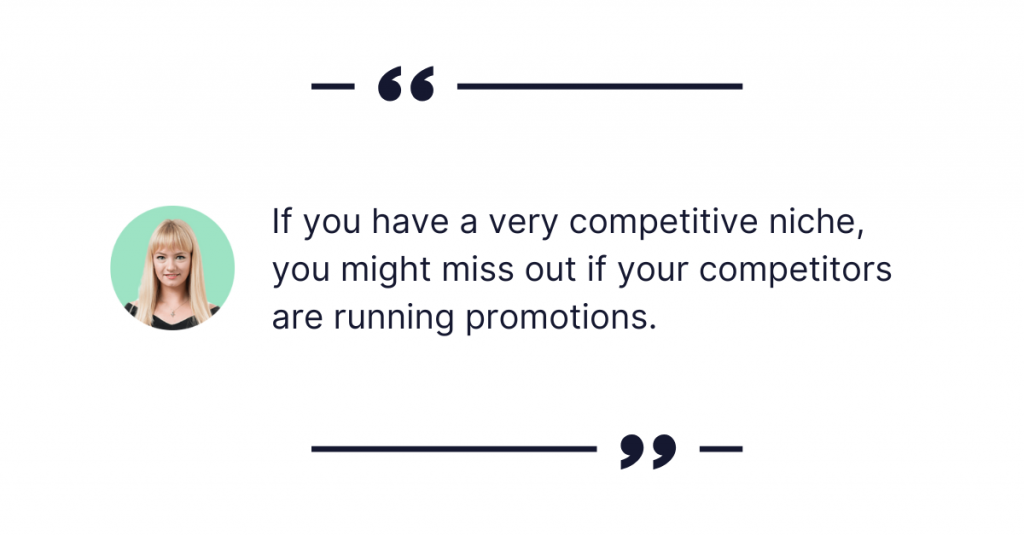
Olga: “Another thing you can do is market research—take a look at what your competitors did last year. If you have a very competitive niche, you might miss out if your competitors are running promotions. If you have a strong brand, then it’s more of a decision to do sales and sales promos or not, unlike if you’re a reseller or a distributor. You don’t want to send the potential customers that might come to you to another store because they have discounts.”
10. How should you treat different audiences?
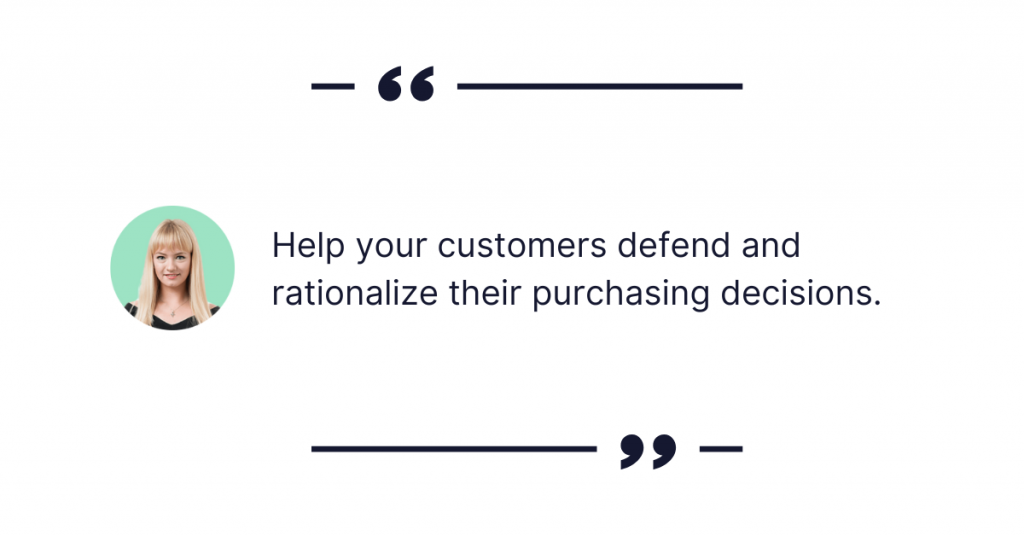
Olga: “In Europe for example, there’s going to be less impulsive buying. Whereas the USA is not that affected by the geopolitical situation currently happening in the world, so we could expect more of those emotional purchases. Think about how you address both of those audiences in your marketing messages and how you attract them to the store. For the Europeans, it will be more important to understand how much they’re actually saving. You could show a message in the checkout or shopping cart that reads You saved X amount + an interesting analogy that this amount is equivalent to. Give your customers the reasons they should make a purchase and help them defend and rationalize their purchasing decision in your marketing communication.”
11. What can you do on a budget? Go-to Black Friday strategies for small merchants
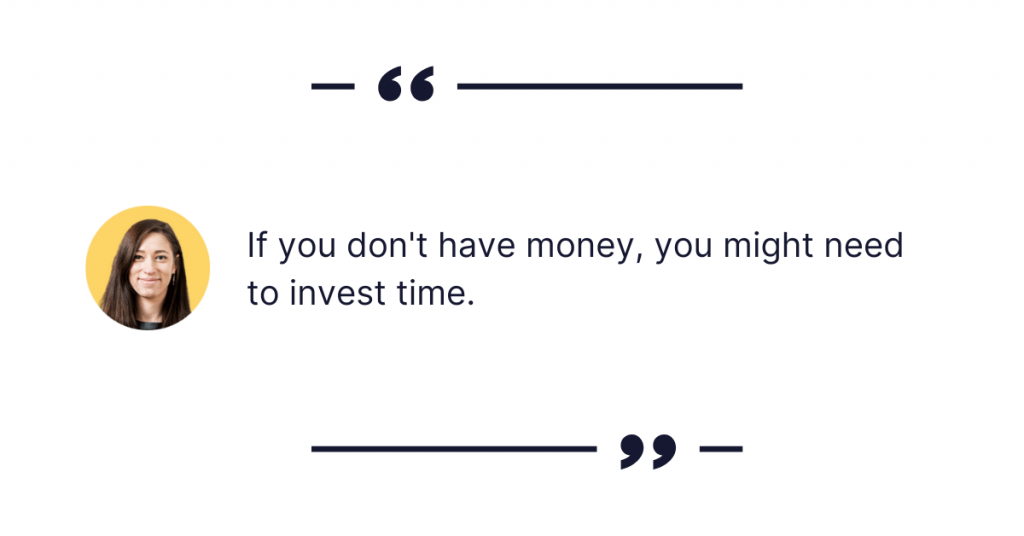
Lina: “There’s that triangle in which you can get only 2 out of 3—cheap, fast, and quality. If you don’t have money, you might need to invest time. For small merchants, start your homework now for the next Black Friday. Do email marketing throughout the year, collect emails, and ensure customers that want to buy from you are in your database and you can reach out to them when the right time comes.
When it comes to advertising, try to narrow down your audience and focus on the audience that was buying from you already (if you have a good reputation). A cold audience will cost a lot more money. Start with your closest circle and then expand.”
Good luck! If you have any concerns or experience any mishaps during preparation for BFCM and could use a helping hand from certified specialists, don’t hesitate to reach out by filling out our contact form, and we’ll be happy to assist.
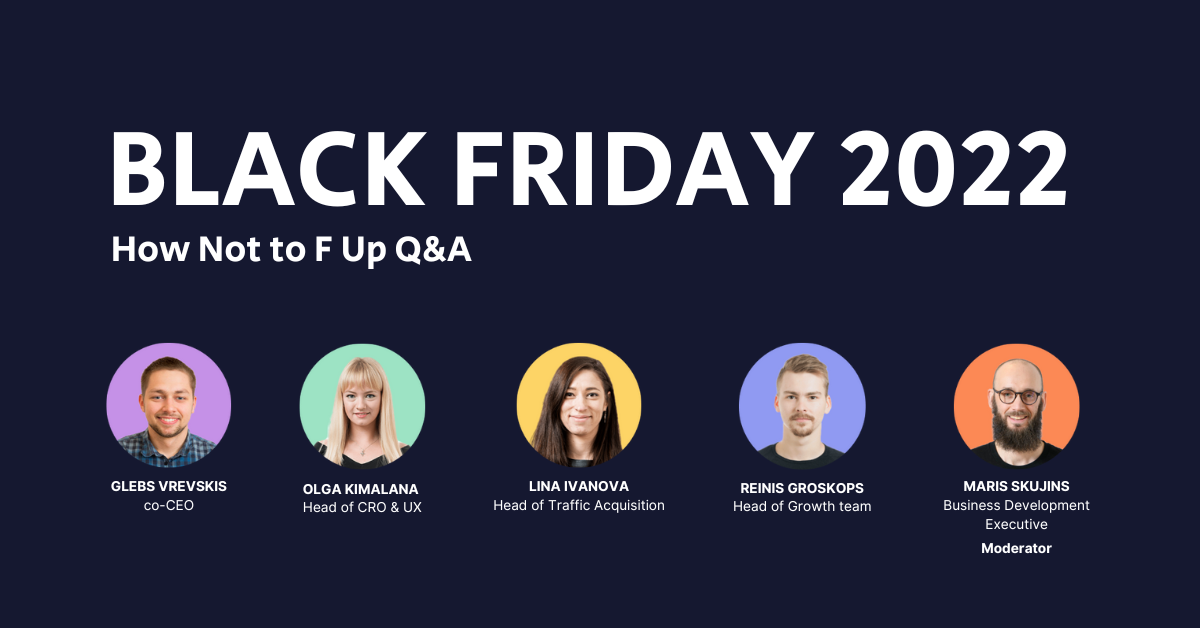


Share on: